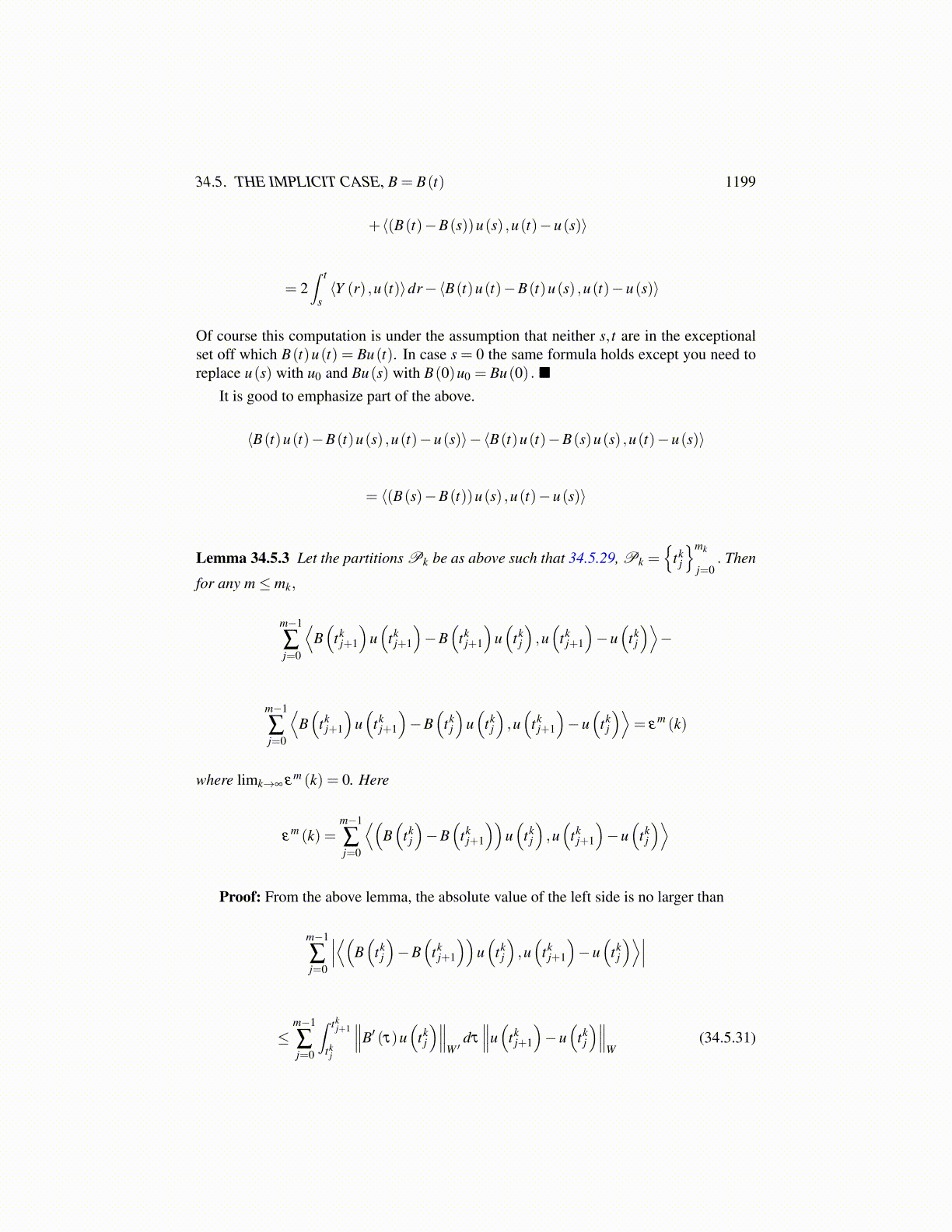
34.5. THE IMPLICIT CASE, B = B(t) 1199
+⟨(B(t)−B(s))u(s) ,u(t)−u(s)⟩
= 2∫ t
s⟨Y (r) ,u(t)⟩dr−⟨B(t)u(t)−B(t)u(s) ,u(t)−u(s)⟩
Of course this computation is under the assumption that neither s, t are in the exceptionalset off which B(t)u(t) = Bu(t). In case s = 0 the same formula holds except you need toreplace u(s) with u0 and Bu(s) with B(0)u0 = Bu(0) .
It is good to emphasize part of the above.
⟨B(t)u(t)−B(t)u(s) ,u(t)−u(s)⟩−⟨B(t)u(t)−B(s)u(s) ,u(t)−u(s)⟩
= ⟨(B(s)−B(t))u(s) ,u(t)−u(s)⟩
Lemma 34.5.3 Let the partitions Pk be as above such that 34.5.29, Pk ={
tkj
}mk
j=0. Then
for any m≤ mk,
m−1
∑j=0
⟨B(
tkj+1
)u(
tkj+1
)−B
(tk
j+1
)u(
tkj
),u(
tkj+1
)−u(
tkj
)⟩−
m−1
∑j=0
⟨B(
tkj+1
)u(
tkj+1
)−B
(tk
j
)u(
tkj
),u(
tkj+1
)−u(
tkj
)⟩= ε
m (k)
where limk→∞ εm (k) = 0. Here
εm (k) =
m−1
∑j=0
⟨(B(
tkj
)−B
(tk
j+1
))u(
tkj
),u(
tkj+1
)−u(
tkj
)⟩
Proof: From the above lemma, the absolute value of the left side is no larger than
m−1
∑j=0
∣∣∣⟨(B(
tkj
)−B
(tk
j+1
))u(
tkj
),u(
tkj+1
)−u(
tkj
)⟩∣∣∣
≤m−1
∑j=0
∫ tkj+1
tkj
∥∥∥B′ (τ)u(
tkj
)∥∥∥W ′
dτ
∥∥∥u(
tkj+1
)−u(
tkj
)∥∥∥W
(34.5.31)